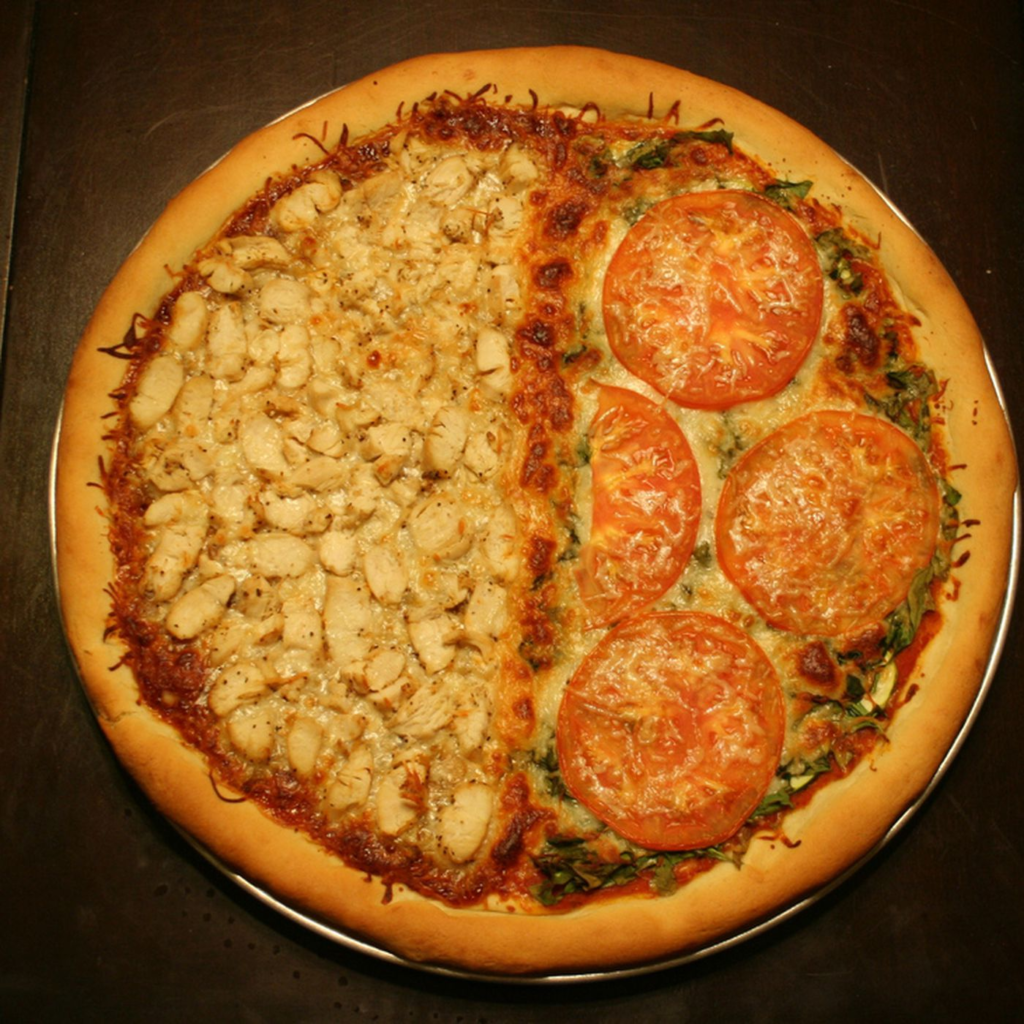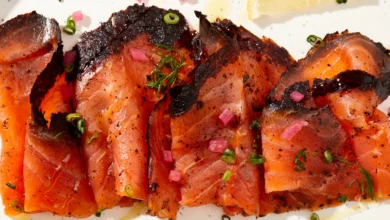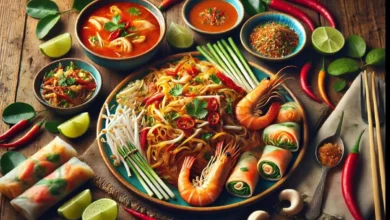The Pizza Edition: A Deep Dive into the World’s Favorite Slice

Introduction: the pizza edition
Pizza is one of the few foods that crosses all boundaries and tastes, bringing people together across the world. From New York to Naples, from Tokyo to Cape Town, pizza has an appeal that transcends cultures, ages, and even dietary restrictions. It’s customizable, versatile, and—let’s face it—absolutely delicious. But what is it about pizza that keeps us coming back for more, craving that warm slice with its gooey cheese, savory toppings, and crispy crust? the pizza edition
In this edition, we’re taking a deep dive into everything pizza: its rich history, its rise to global fame, the science behind what makes it so irresistible, popular styles, trends, and even tips for making a perfect pie at home. Whether you’re a pizza connoisseur or a casual slice enthusiast, this guide has something for everyone. the pizza edition
Chapter 1: A Slice of History—The Origins of Pizza
From Ancient Flatbreads to Modern Pizza
Pizza’s roots go far deeper than the Italian boot. While many associate pizza with Naples, Italy, the history of flatbreads topped with ingredients spans centuries and continents. Ancient Egyptians, Greeks, and Romans all enjoyed flatbreads with a variety of toppings, from herbs to cheese to honey. the pizza edition
However, the pizza as we know it today originated in Naples in the 18th century. By then, tomatoes—once thought to be poisonous in Europe—had made their way into Neapolitan cuisine. Local bakers began adding tomatoes, cheese, and other toppings to flatbread, selling these early pizzas as street food. Naples was bustling, and pizza quickly became a favorite of working-class Neapolitans, offering a quick, affordable, and tasty meal. the pizza edition
Margherita and the Queen’s Approval
In 1889, Queen Margherita of Italy visited Naples, where she tried three varieties of pizza made by a local baker, Raffaele Esposito. Legend has it that her favorite was a pizza topped with tomatoes, mozzarella, and basil—a patriotic combination that mirrored the Italian flag’s colors. This “Pizza Margherita” gained national and eventually international recognition, cementing its place as a classic pizza that remains a favorite to this day. the pizza edition
Chapter 2: The Rise of Pizza Around the World

Pizza Comes to America
Pizza made its way to the United States in the early 20th century with waves of Italian immigrants. Settling primarily in cities like New York and Chicago, they brought with them their culinary traditions, including the beloved pizza. The first pizzerias in the United States, such as Lombardi’s in New York (established in 1905), became hubs of Italian culture and soon attracted a broader clientele. the pizza edition
Pizza Goes Global
With the expansion of American food culture in the post-World War II era, pizza began to spread beyond Italian-American communities and became popular nationwide. By the 1950s, pizza had moved from ethnic specialty to American favorite, with companies like Pizza Hut and Domino’s establishing pizza as an easily accessible, customizable fast food. Today, pizza is a global sensation, with local flavors and ingredients adding unique twists to a universal favorite. the pizza edition
Chapter 3: The Science Behind Why Pizza Tastes So Good
The Perfect Combination of Flavors
Pizza is an ideal example of what scientists call “umami,” the fifth taste that enhances flavors. Umami is that savory, deeply satisfying flavor often associated with meats, cheese, and tomatoes. The combination of umami-rich ingredients like mozzarella, tomato sauce, and cured meats like pepperoni creates a flavor profile that’s irresistible to many. the pizza edition
The Chemistry of Cheese
Cheese is one of pizza’s essential ingredients, and mozzarella, in particular, is perfect for pizza. It has an ideal balance of fat and moisture, allowing it to melt smoothly without becoming too greasy. When heated, mozzarella undergoes a process called “Maillard reaction,” which creates complex flavors and aromas that add depth to each bite. the pizza edition
Dough: The Backbone of the Slice
The pizza dough is the foundation of a good pizza. Its unique texture and flavor come from yeast fermentation, which produces carbon dioxide, making the dough rise, and ethanol, adding a slightly sweet, fermented taste. The type of flour, fermentation time, and cooking temperature all affect the final texture—whether you want a chewy Neapolitan crust, a crispy New York slice, or a thick, buttery Chicago deep-dish. the pizza edition
Chapter 4: Pizza Styles Around the World
1. Neapolitan Pizza
Neapolitan pizza is the classic Italian style and is typically cooked in a wood-fired oven at high temperatures. Its crust is thin, soft, and slightly charred, with a chewy texture and minimal toppings: usually just fresh mozzarella, tomatoes, basil, and a drizzle of olive oil. the pizza edition
2. New York Style Pizza
New York-style pizza is characterized by a thin, foldable crust that’s slightly crispy on the bottom. Typically topped with a generous layer of mozzarella and tomato sauce, New York slices are often eaten on the go and can be topped with anything from pepperoni to veggies. the pizza edition
3. Chicago Deep-Dish Pizza
Deep-dish pizza is a Chicago classic, with a thick, buttery crust that lines a tall pan. This style is layered with cheese and toppings on the bottom, followed by a hearty tomato sauce on top. It’s almost more of a pizza “pie” than a slice, and it’s perfect for those who love a hearty, filling meal. the pizza edition
4. Sicilian Pizza
Sicilian pizza, also known as “sfincione,” originated in Sicily and is usually served as a thick, square slice. The dough is airy and soft, with a slightly spongy texture, and it’s typically topped with cheese, tomato sauce, and sometimes anchovies. the pizza edition
5. Japanese “Okonomiyaki” Pizza
In Japan, “okonomiyaki” is a savory pancake topped with ingredients like seafood, meat, and vegetables, often with a sauce similar to Worcestershire and a drizzle of mayonnaise. Though not traditional pizza, its round shape and toppings make it a popular pizza-inspired dish in Japan. the pizza edition
Chapter 5: The Modern Pizza Landscape and Trends
Plant-Based and Vegan Pizza Options
As dietary preferences and sustainability concerns have evolved, so has the pizza industry. Plant-based cheese and meat alternatives are now widely available, making it easier for vegans and those with dairy allergies to enjoy pizza. Popular options include cashew-based mozzarella, almond ricotta, and soy-based pepperoni.
Gluten-Free Crusts
With the rise in gluten sensitivity and celiac disease, gluten-free pizza crusts have become more common. These crusts are often made with a blend of rice flour, potato starch, and tapioca starch to create a crust that’s almost as chewy and crisp as traditional wheat-based dough.
Artisanal and Gourmet Pizzas
There’s been a recent push toward high-quality, artisanal pizzas. These pizzas often feature unique, locally sourced ingredients, such as wild mushrooms, truffle oil, or heirloom tomatoes. Artisanal pizzerias may also experiment with specialty flours, fermentation techniques, and even aging the dough for several days to create an enhanced texture and flavor.
The Rise of Pizza Ovens for Home Cooking
Portable and compact pizza ovens, like the Ooni and the Roccbox, have made it easier than ever to make high-quality, restaurant-style pizza at home. These ovens can reach temperatures of up to 900°F, allowing for authentic Neapolitan-style pizzas with a beautifully charred crust in just a few minutes.
Chapter 6: Tips for Making the Perfect Pizza at Home
1. Choose the Right Flour
For a classic pizza dough, use high-protein bread flour or Italian “00” flour, which is ground more finely than all-purpose flour and provides the right balance of chewiness and crispiness. The flour you choose can make a big difference in the texture of your crust.
2. Let the Dough Rise Properly
Dough requires time to rise so that the yeast can work its magic. Ideally, let your dough rise at room temperature for a few hours, then let it cold-ferment in the fridge overnight. This process develops flavor and gives the dough a great texture.
3. Don’t Overdo the Toppings
While it can be tempting to pile on toppings, less is often more. Heavy toppings can make the pizza soggy and prevent the dough from cooking properly. A good rule of thumb is to aim for balance: a thin layer of sauce, a sprinkling of cheese, and a few carefully chosen toppings.
4. Use High-Heat Cooking
If you don’t have a pizza oven, preheat your regular oven to the highest setting (usually around 500°F). Place a pizza stone or baking steel in the oven to help retain heat and achieve a crisp crust. Bake the pizza on the preheated stone or steel to get the best results.
5. Experiment with Flavors
One of the best things about homemade pizza is the freedom to experiment. Try new sauces like pesto or white garlic cream, different cheeses like goat or blue cheese, and toppings from roasted veggies to spicy sausage. You might discover a new favorite combination.
Chapter 7: Fun Pizza Facts and Trivia
- The World’s Largest Pizza was created in Rome in 2012. It covered 13,580 square feet and was named “Ottavia” in homage to the first Roman emperor.
- Americans Eat Over 3 Billion Pizzas each year, with pepperoni being the most popular topping.
- The Margherita Is Officially Protected by the European Union, recognized as a traditional specialty with specific guidelines on ingredients and preparation methods.
- Pizza Delivery Goes to Space: In 2001, Pizza Hut delivered a pizza to the International Space Station, making it the first pizza delivery in space!
Conclusion: A Slice for Everyone
Pizza’s universal appeal lies in its versatility and the way it can be adapted to suit any palate, lifestyle, or culture. Whether you’re a purist who prefers a classic Margherita or an adventurous eater who enjoys unconventional toppings, pizza has something for everyone. So next time you enjoy a slice, take a moment to appreciate the centuries of history, the science of flavor, and the artistry of dough that come together to create this culinary masterpiece.



